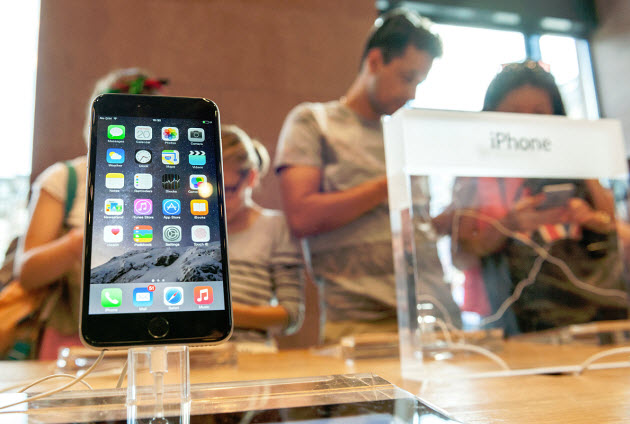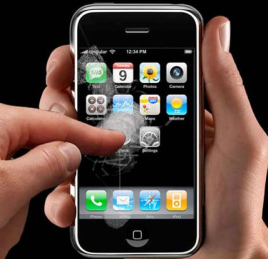The retail stores are starting to change the way that they have made their displays and iPods are losing.
There has been a lot going on over the past few months at Apple, and now there has been another indication that that tech giant is changing its priorities as its displays of mobile devices have been changed around and iPods won’t be included within them, anymore.
This removal of the connected MP3 players is a clear indication of a reduced focus on those gadgets.
Though the iPhones, iPads, Macs, and Apple Watches will still be retaining their places of honor among the mobile devices on Apple Store shelves, employees have now been told that they are to take the iPods down from the displays of those featured devices. Instead, they will be tucked away with other types of gadgets and accessories, such as headphones, battery chargers, and watch bands.
Aside from the change in priority with regards to its mobile devices, the displays at the Apple Stores will be changing.
 Aside from the removal of iPods from the main featured gadget displays, Apple is also going to take the majority of its smart displays away. Those were in the form of iPads that would reveal a product’s details to consumers. Those informational iPad stations will now be taken away and will be replaced with a new information display strategy.
Aside from the removal of iPods from the main featured gadget displays, Apple is also going to take the majority of its smart displays away. Those were in the form of iPads that would reveal a product’s details to consumers. Those informational iPad stations will now be taken away and will be replaced with a new information display strategy.
Instead of relying on the tablets to show the details, the gadgets, themselves, will be introducing customers to what they’re all about. Each of the displayed mobile technology devices will now be displaying its own prices, specifications, and other details on their screens. These changes are effective as of Wednesday.
The fact that the iPod has lost its place among the main featured mobile devices isn’t just an indication that there aren’t as many MP3 players being sold through the Apple Store as there used to be, but it also points to the company’s new focus on the digital side of media. With Apple Music now in the mix, it’s directing its attention away from digital downloads in favor of a business that is more service-based.
A recent survey has shown that apps play an important role in m-commerce decision making.
The results of a new survey that was conducted by Apptentive have shown that most shoppers will browse through at least one retail mobile app before they actually head out to a brick and mortar shop to purchase the item they have been considering.
The survey involved the participation of 350 people, and was held in July 2015 regarding shopping habits.
What the survey showed was that when consumers were considering making a purchase, many of them would turn to a mobile app, or several applications, to help them through the decision making portion of their purchasing experience. The data leaned heavily to the side of using mobile technology when retail shopping was involved.
The survey showed 88 percent of shoppers used a mobile app from one of their favorite retailers.
 It also revealed that 61 percent of the participants said that they had used those mobile apps within the month prior to having participated in the survey. A smaller number of the respondents, 26 percent, said that they used their retail apps on a regular basis – that is, 7 or more times per month.
It also revealed that 61 percent of the participants said that they had used those mobile apps within the month prior to having participated in the survey. A smaller number of the respondents, 26 percent, said that they used their retail apps on a regular basis – that is, 7 or more times per month.
Overall, the mobile device users would look to their apps to help them to prepare to head out and go shopping. They would usually have finished using those applications ahead of actually arriving at the brick and mortar shop. Apptentive called the behavior “app-rooming”, as 71 percent would use the application as a kind of digital showroom, to look through the specifications of a product before actually heading over to look at the physical item that they wished to purchase. Those shoppers conducted this app-rooming behavior at least one time every month.
Once they actually reached the stores, they would still use the mobile app, but not quite as much. Just slightly more than half of the respondents to the survey had used retail apps while they were actually within the store itself. Still, over half is a highly significant proportion of the customers that make their way into a store on any given day.
 Aside from the removal of iPods from the main featured gadget displays, Apple is also going to take the majority of its smart displays away. Those were in the form of iPads that would reveal a product’s details to consumers. Those informational iPad stations will now be taken away and will be replaced with a new information display strategy.
Aside from the removal of iPods from the main featured gadget displays, Apple is also going to take the majority of its smart displays away. Those were in the form of iPads that would reveal a product’s details to consumers. Those informational iPad stations will now be taken away and will be replaced with a new information display strategy.
 It also revealed that 61 percent of the participants said that they had used those mobile apps within the month prior to having participated in the survey. A smaller number of the respondents, 26 percent, said that they used their retail apps on a regular basis – that is, 7 or more times per month.
It also revealed that 61 percent of the participants said that they had used those mobile apps within the month prior to having participated in the survey. A smaller number of the respondents, 26 percent, said that they used their retail apps on a regular basis – that is, 7 or more times per month.